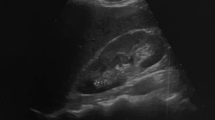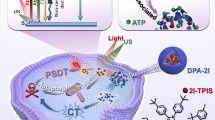Abstract
Most methods of modern laser tumour therapy are physically based on the conversion of light to heat. Recently tumours have also been treated using ionizing processes for tissue ablation. Photodynamic laser therapy (PDT), however, involves light-induced non-thermal biochemical processes and the use of a photosensitizer.
Several drugs are known to be stored selectively in tumours after systemic application. This transient marking can be used for diagnostic and therapeutic procedures. The marker most commonly used is dihaematoporphyrin ether/ester (DHE) intravenously injected at doses of 0.2–3.0 mg/kg bodyweight for diagnosis and therapy, respectively. The corresponding clearance intervals after injection of DHE range from 3–48 h to 25–75 h.
Detection of photosensitized tumours might offer great advantages. The highly sensitive two-wavelength laser excitation method with computerized fluorescence imaging recently has been transferred to the hospital for clinical tests.
Photoinduced production of singlet oxygen is claimed to be the initial process which leads to later tumour destruction and therapy. PDT has been applied to 20 patients suffering from superficial tumours (TIS GII–III) recurred after application of other treatments. The results after PDT were evaluated by three-monthly check-ups (endoscopy, cytology, bladder mapping, renal ultrasonography) as well as by computed tomography (CT) examination at 8–13 month intervals. In six patients treated by PDT no tumour recurrence has been found over the whole observation period of up to 5 years. Four patients have remained free of tumour (12 and 14 months) after repeated transurethral resection (TUR) and Nd-YAG laser therapy following PDT. Due to an initial application of insufficient irradiation four patients required a second PDT. In one patient a circumscribed dysplasia appeared at the left ostium 26 months following PDT and was treated successfully by means of thermal Nd-YAG laser irradiation following TUR. In six patients slight mucosal atypia persisted for a period of at least 2.5 years. One cystectomy had to be performed because of bladder shrinkage. The dissected bladder, however, was free of tumour.
These preliminary results suggest that PDT is justified in patients who are in a worst-case situation with cystectomy recommended in case of recurrent superficial TIS bladder carcinoma and indicate the future potential of photodynamic therapy of tumours.
Homogeneous irradiation of the area to be treated and a reliable light dosimetry are prerequisites for an effective tumour therapy. Standard instruments for a routine application do not exist, but are under development.
Similar content being viewed by others
References
Althausen AF, Prout GR, Daly JJ. Non-invasive papillary carcinoma of the bladder associated with carcinoma in situ.J Urol 1976,116:575–80
Jocham D, Staehler G, Chaussy C et al. Laserbehandlung von Blasentumoren nach Photosensibilisierung mit Hämatoporphyrin-Derivat—eine neue Therapiemöglichkeit? Verhandlungsbericht 33. In:Tagung der Deutschen Gesellschaft für Urologie. Berlin-Heidelberg-New York: Springer 1981:385–7
Jocham D, Schmiedt E, Baumgartner R, Unsöld E. Integral laser-photodynamic treatment (PDT) of multifocal bladder carcinoma photosensitized by HpD.Eur Urol 1986,12 Suppl 1:43–6
Benson RC. Integral photoradiation therapy of multifocal bladder tumors.Eur Urol 1986,12 Suppl 1:47–53
Hisazumi H, Miyoshi N, Misaki T. A trial manufacture of a motor-driven laser light scattering optic for whole bladder wall irradiation. In: Doiron D, Gomer C (eds)Porphyrin localization and treatment of tumors. New York: Alan R. Liss 1984:239–47
Star WM, Marijnissen HPA, Jansen H et al. Light dosimetry for photodynamic therapy by whole bladder wall irradiation.Photochem Photobiol 1987,46:619–25
Baghdassarian R, Wright MW, Vaughn SA et al. The use of lipid emulsion as an intravesical medium to disperse light in the potential treatment of bladder tumors.J Urol 1985,133:126–9
Baumgartner R, Feyh J, Götz A et al. Experimental study on laser-induced fluorescence in hematoporphyrin derivative (HpD) in tumor cells and animal tissue.Lasers Med Surg 1986,2:4–9
Baumgartner R, Jocham D, Stepp H, Unsöld E. Diagnostik von Tumoren durch Nachweis laserinduzierter Fluoreszenz von Hämatoporphyrin-Derivat (HpD).Lasers Med Surg 1986,3:114–5
Baumgartner R, Fisslinger H, Jocham D et al. A fluorescence imaging device for endoscopic detection of early stage cancer—instrumental and experimental studies.Photochem Photobiol 1987,46:759–63
Author information
Authors and Affiliations
Rights and permissions
About this article
Cite this article
Unsöld, E., Baumgartner, R., Beyer, W. et al. Fluorescence detection and photodynamic treatment of photosensitized tumours in special consideration of urology. Laser Med Sci 5, 207–212 (1990). https://doi.org/10.1007/BF02031384
Issue Date:
DOI: https://doi.org/10.1007/BF02031384




